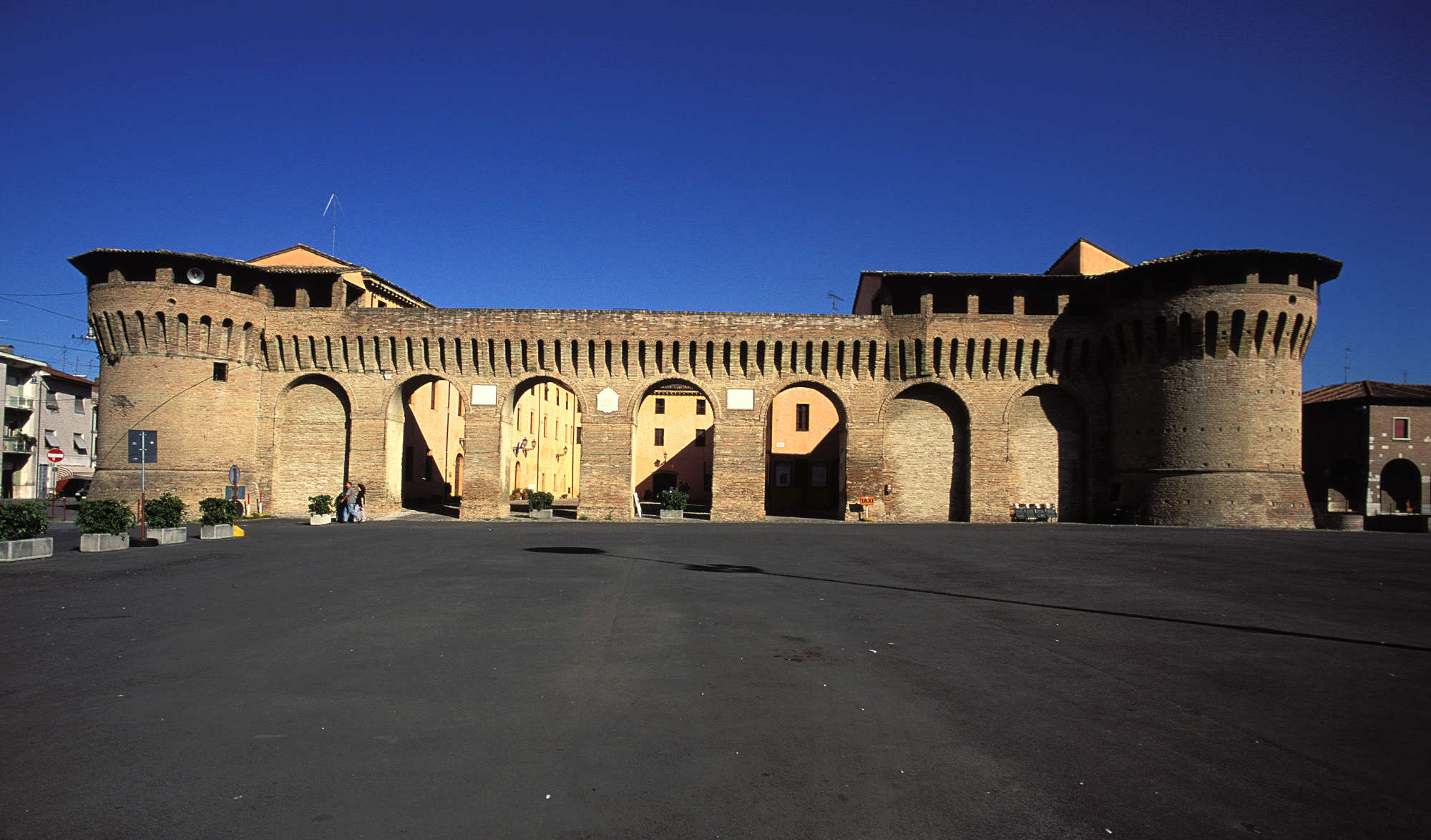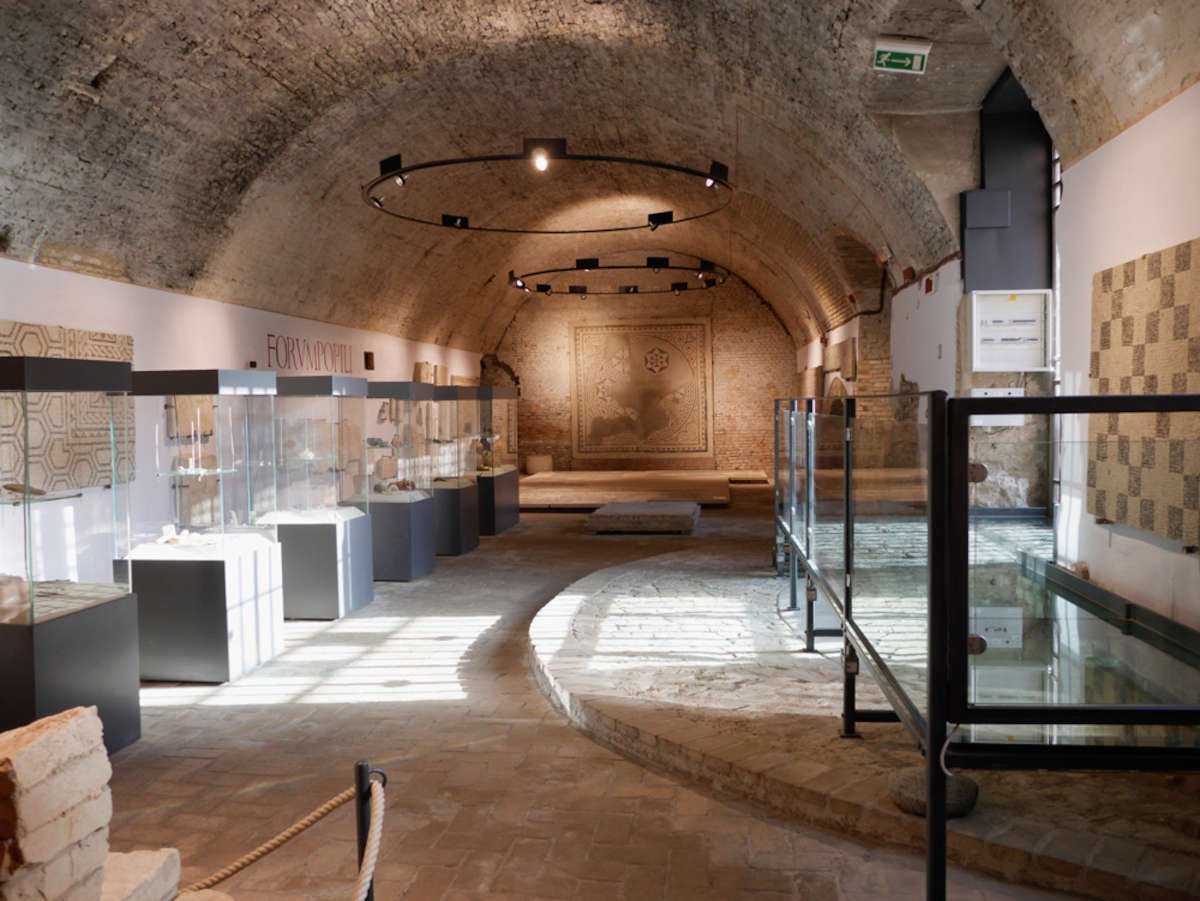
Journey through the Medici fortresses of Romagna
In the Renaissance, part of Romagna was placed under the rule of Florence. Today, several Medici fortresses in the region recall this history: here is an itinerary among ten castles linked to the Tuscan presence in Romagna.
By Redazione | 25/11/2024 12:35
A journey through a land where history has shaped every stone, every tower, every village, in the heart of Romagna and particularly of Tuscan Romagna. Thehinterland of Romagna is marked by the presence of several Medici fortresses: in Renaissance times, in fact, part of Romagna was placed under the rule of the Medici, and in general the whole region was the subject of battles and disputes, its position being decidedly important from a strategic point of view. Thus, one can take an itinerary among masterpieces of military engineering and landscapes that look like something out of a Renaissance painting. This region tells stories of disputed borders and an expanding Florence, ruled by the Medici. From the 15th century until 1923, Romagna was a crossroads of cultures, strategies and architectural innovations. More specifically, Tuscan Romagna, on the Adriatic side of the Tuscan-Romagna Apennines, is an area dotted with fortresses and towers that once controlled crucial communication routes connecting Florence to northern Italy.
In 1403, when the Florentine territories in Romagna had acquired their own physiognomy, Florence designated Castrocaro as its capital and named the territories Provinciae Florentinae in partibus Romandiolae. There is also a founding city: it is Terra del Sole, founded in 1564 near Castrocaro, just 6 km from Forli. This masterpiece of Renaissance engineering was created to ensure strict control of the region, concentrating jurisdictional powers in the hands of an official trusted by Cosimo I de' Medici. The itinerary among the strongholds of Romagna also includes the Rocche di Forlì and Forlimpopoli, linked to the figure of Caterina Sforza, who married Giovanni de' Medici, nephew of Lorenzo the Magnificent, in her third marriage. For the Rocca di Ravaldino, Caterina Sforza commissioned major extensions, entrusting them to the Florentine architect Mastro Giorgio Fiorentino, known for his expertise in fortress design.
The Medici fortresses are not just works of engineering: they are witnesses to Florentine rule, its desire for control and its ability to build structures that would withstand time and invasion. Each stage of this itinerary reminds us of the crucial role of fortifications in the history of Tuscan Romagna. Not just instruments of defense, these works represent the power and culture of an era that made engineering and architecture a universal language. A fascinating itinerary, a journey through history, an experience that combines the beauty of the Apennine landscape with the discovery of a unique cultural heritage. Every village, every fortress, every stone tells a story of conquest, defense and ingenuity. Here, below, are the ten stages of the journey.
1. Premilcuore
Premilcuore, nestled near the border with Tuscany, is a village whose origins are little known, shrouded even in legends, and lost in the millennia: traces of the Eneolithic age, Umbrian-Etruscan artifacts and remains from the late Roman period testify to its antiquity. Documented history begins with Florentine rule in 1375, an era marked by tumultuous events, including occupation by Filippo Maria Visconti and the brief reign of Caterina Sforza, who in 1494-1496 took refuge in Premilcuore to defend herself from the attack of Cesare Borgia. The turning point came in 1504, when a betrayal by the castellan handed the village over to the Florentines, consolidating its affiliation with Florence. After centuries of political vicissitudes, Premilcuore officially passed to the province of Forli from that of Florence in the early 1900s. This turbulent past is etched in the stones of its walled village, once accessible only through two gates: Porta di Sotto, now demolished, and Porta Fiorentina, which stands the test of time albeit with some restoration. Inside, the ancient Rocca dominates the panorama, evoking the struggles and powers that contested this land.
Not far from the village stands the Pieve di San Martino in Alpe, a medieval masterpiece remodeled in 1526. This church, with its typical Tuscan Renaissance elegance, preserves a 15th-century cross, a work that embodies the link between Premilcuore and the Florentine artistic tradition.
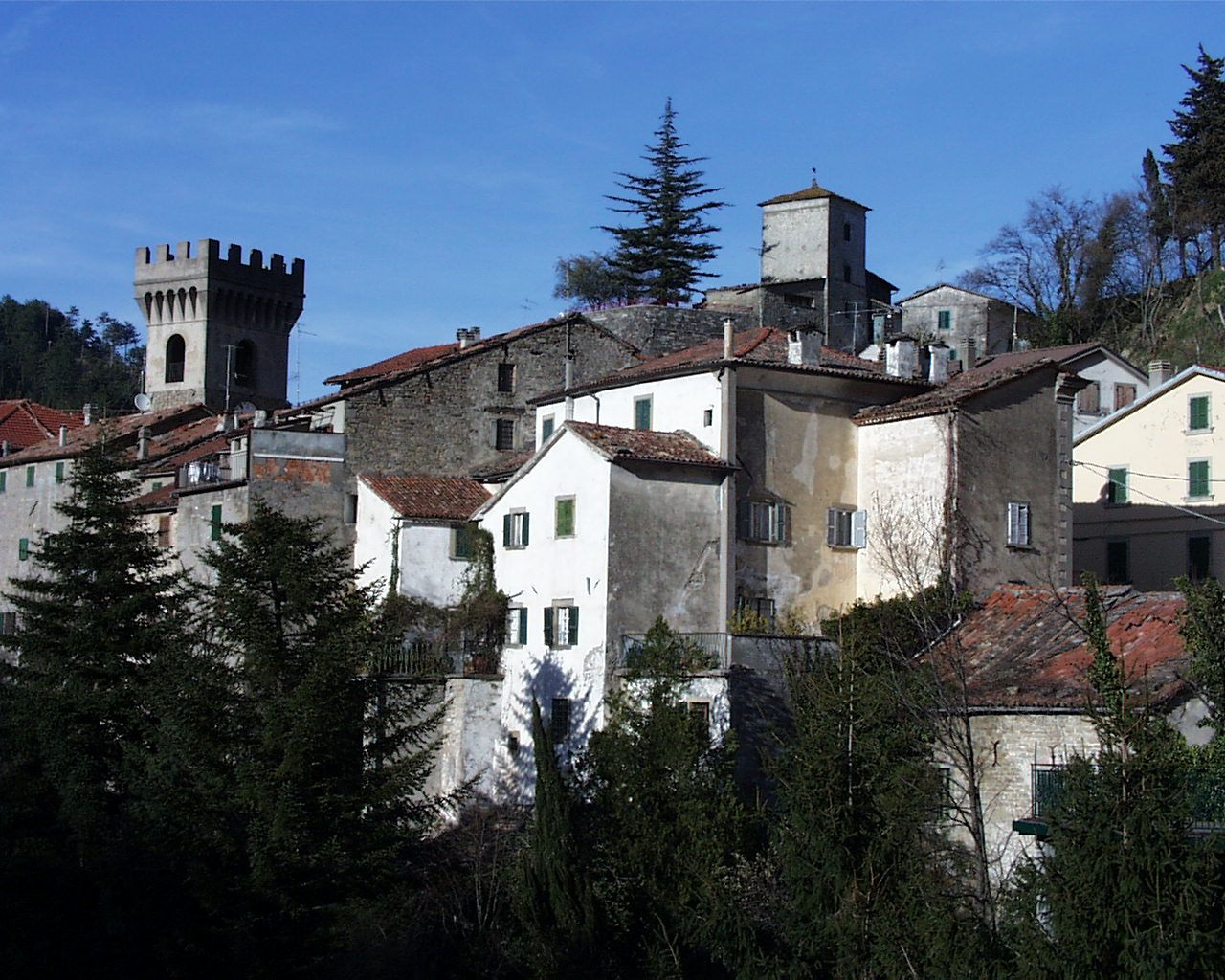
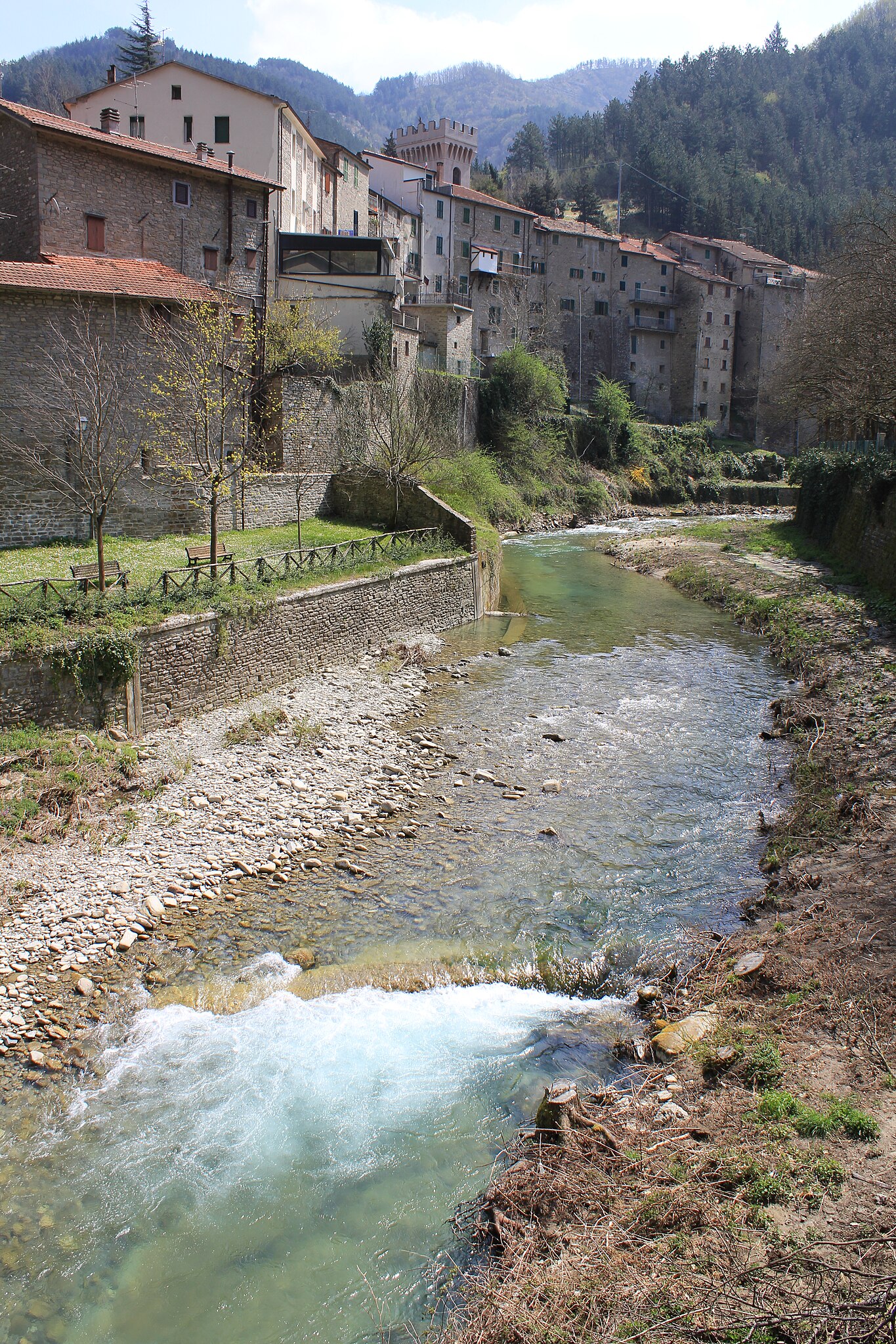
2. Portico and San Benedetto
Portico and San Benedetto are two faces of a single history, united in an interweaving of culture, architecture and tradition. Portico in Romagna, whose name comes from the Latin porticum (covered market), became in 1386 the capital of Tuscan Romagna under the rule of Florence. Its unique and well-preserved medieval structure is divided into three distinct levels but connected by passages that tell the story of daily life in the past: the castle at the top, with the Portinari tower and the Palazzo del Podestà; the porticos and noble palaces such as Palazzo Portinari on the middle floor; and the houses of the commoners along the river, which closed off the village at the bottom. At the four corners of the village, watchtowers transformed over time into storehouses or swallow houses testify to the defensive needs of the time.
San Benedetto in Alpe, on the other hand, developed around the famous abbey of the same name, founded by Cluny monks around the year 1000. This center, which arose near the junction of the Acquacheta, Rio Destro and Troncalosso streams, took the name Biforco and was soon enriched with mills, a hospice for wayfarers, and agricultural facilities such as the sheepfold and the goathouse. However, its abbey experienced decline in the 14th century, with the loss of the Benedictine order and the passage to the Vallombrosans, until a second decline in 1529. Later restorations profoundly altered the building's architecture, moving the apse and destroying part of the original cloister. Both villages' ties to Florence are rooted in the centuries: from 1440, Portico and San Benedetto came under the jurisdiction of the Signoria that was first the Medici and then the Lorraine, keeping alive a craftsmanship that thrived alongside agricultural and religious traditions.
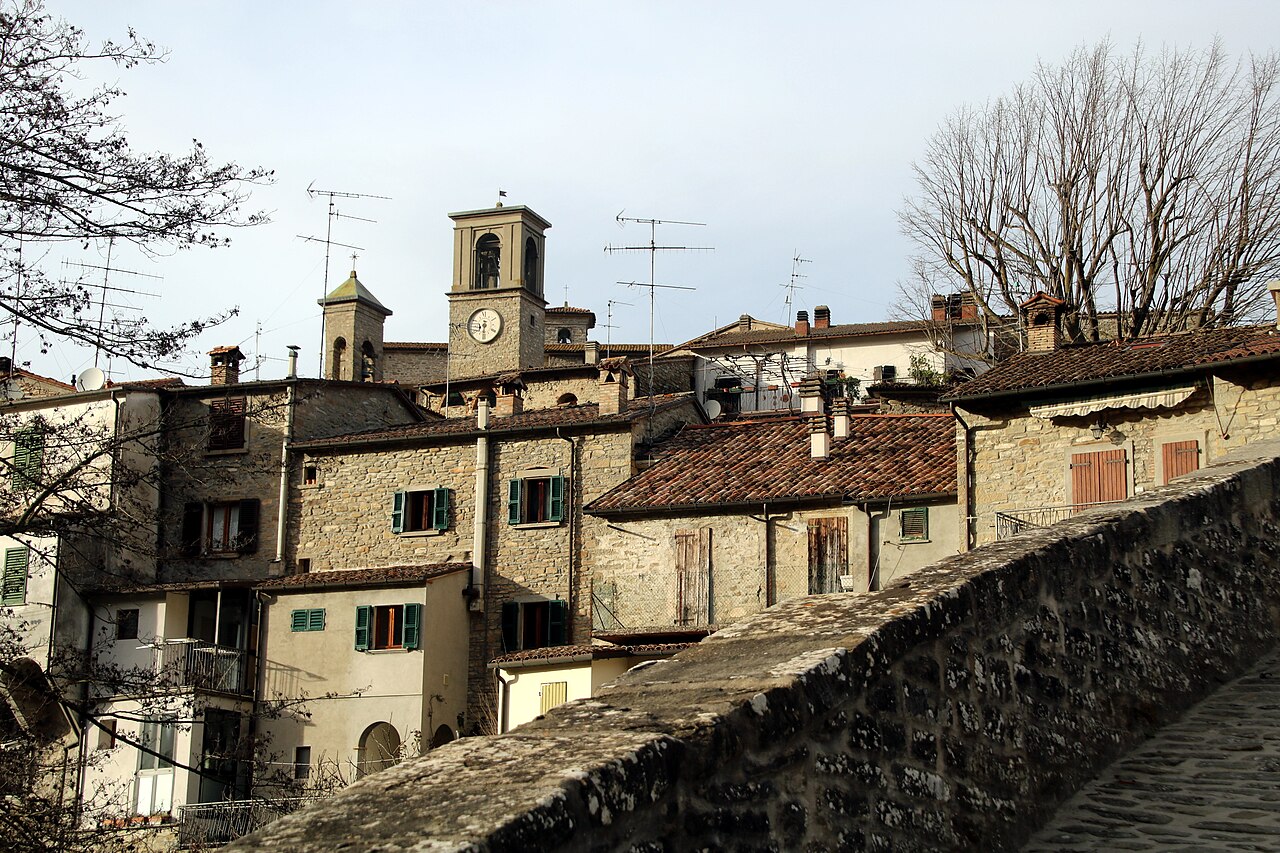
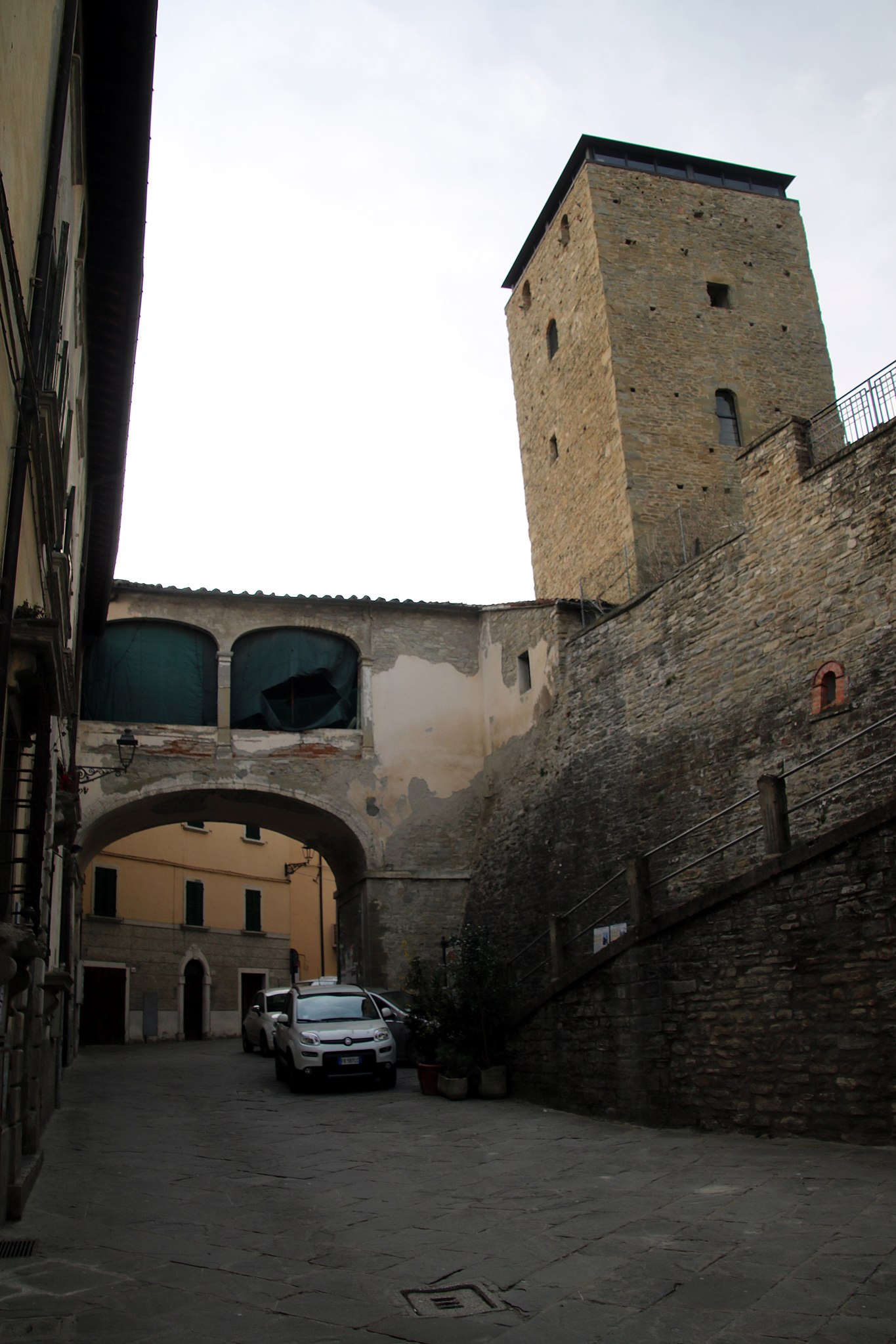
3. Rocca San Casciano
Rocca San Casciano, whose first written reference dates back to 1197, has experienced a tumultuous history marked by invasions, conquests and natural disasters. The original castle, attested in the 13th century, was one of the fortresses under the jurisdiction of the bishop of Forlimpopoli, later entrusted to Faenza. In 1382 it passed to Florence, but not without ups and downs: the Visconti conquered it in 1424, only to cede it to the Ordelaffi the following year. The Florentines reconquered the fortress in 1436, consolidating their control.
The events of 1504, with the occupation of the castle by Dionigi Naldi on behalf of Venice, marked a turning point: the Venetians dismantled the fortress, thus weakening its strategic function. In 1661 a devastating earthquake struck Rocca San Casciano, causing the structure to partially collapse. What was once a symbol of power and defense was slowly adapted to more humble uses, turning into rural dwellings.
The village of Rocca San Casciano, even with its historical wounds, remains a living witness to the great powers that came over the territory: from the Signoria of Florence, which included it in its domains for centuries, to local dynasties and Venetian influences.

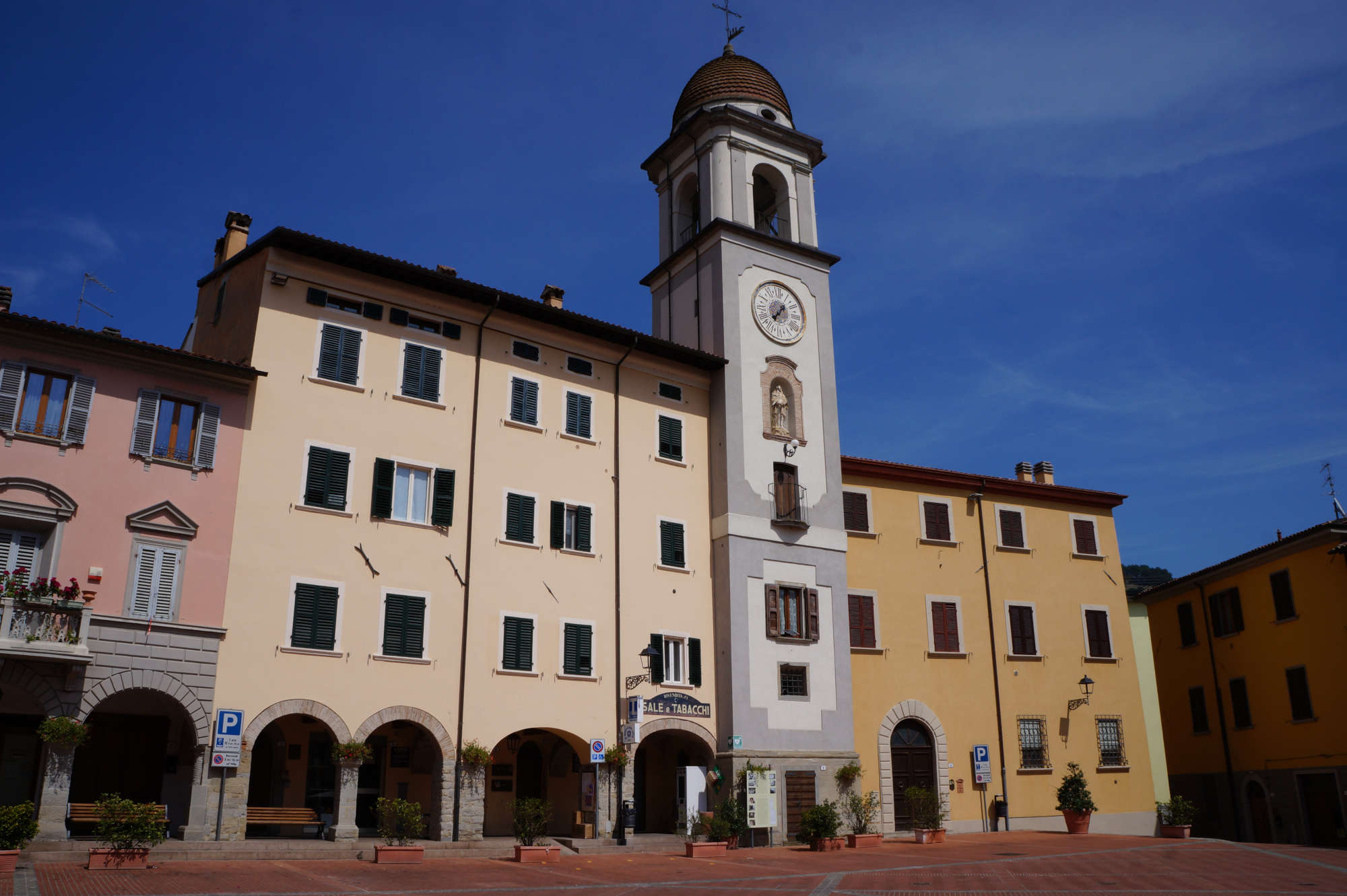
4. Dovadola
The 12th-century fortress of Dovadola still dominates the rocky outcrop on which it was built to control the road between Romagna and Tuscany. Initially owned by the archbishops of Ravenna, it passed to the monks of San Benedetto in Alpe and finally to the Conti Guidi, who made it a bulwark of their power. The fortress was oriented toward the northeast, ready to face possible attacks from Romagna, while its terraces faced Tuscany, symbolizing a dual cultural and geographical affiliation.
Dovadola's fortified structures, with the keep towering above the surrounding landscape, evoke a time when every path was guarded and every valley concealed pitfalls. Today the village is an example of how history can shape the identity of a place, where centuries of contention between lordships are reflected in its walls and architecture.
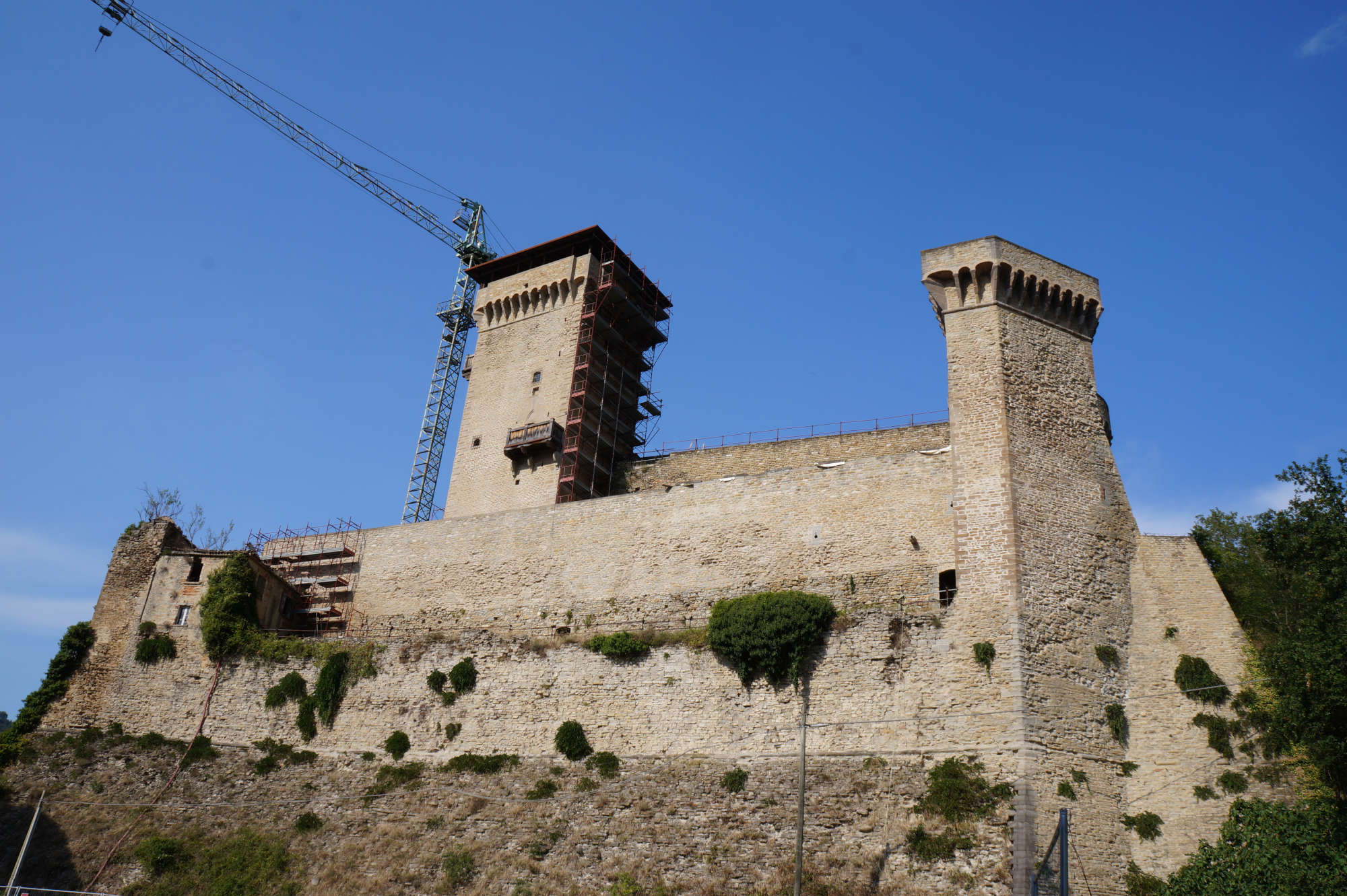
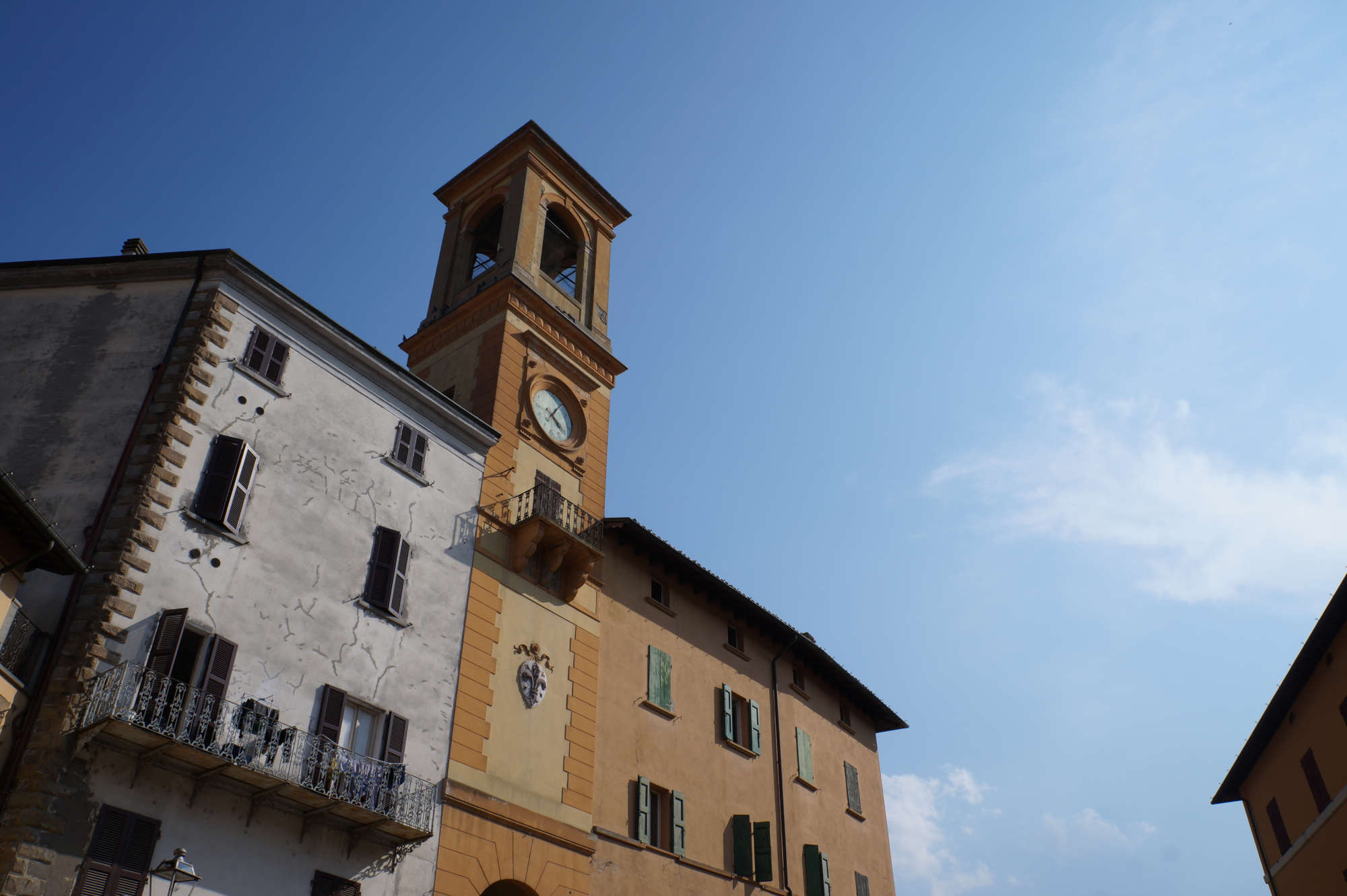
5. Modigliana
Modigliana boasts a history rooted in the 9th century, when Countess Ingelrada made a gift of it to her son Pietro, deacon of Ravenna. In the following centuries, the castle and fortress were the heart of the power of the Counts Guidi, who obtained the title of Counts Palatine and made it one of their main strongholds.
In 1166, the castle hosted Emperor Frederick Barbarossa, whose wife gave birth to a son within its walls. This event marked one of the most illustrious moments in the history of Modigliana, which became an object of contention between Florence and the empire's allies. In 1440 Florence reconquered the town and, to ensure its defense, built a third wall with twelve towers. The Rocca, with its cylindrical keep and imposing river pebble walls, was the center of medieval life. Inside were cisterns, dwellings, and a chapel dedicated to St. Barbara. But with the decline of military functions (beginning in the late 16th century, when Modigliana was no longer strategic to Florence), the construction of new fortresses and natural disasters-such as the earthquakes of 1661, 1725 and 1918-the complex was abandoned.
Today, despite centuries of neglect and the damage inflicted by time, Modigliana still retains the charm of the medieval and renaissance era, the most shining period in the history of the village, when hunts, horseback rides, knights' tournaments, festivals and markets took place around the fortress.
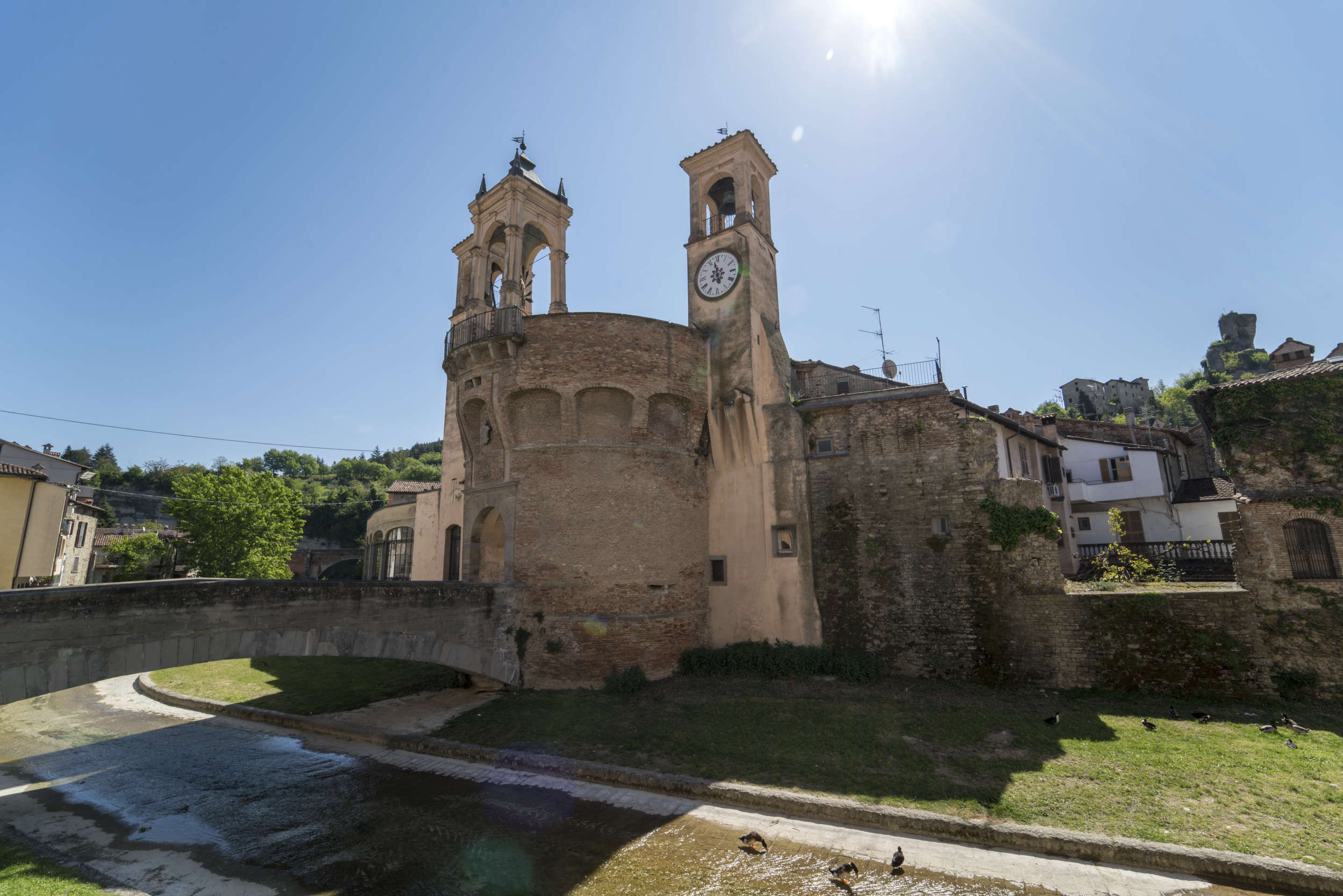
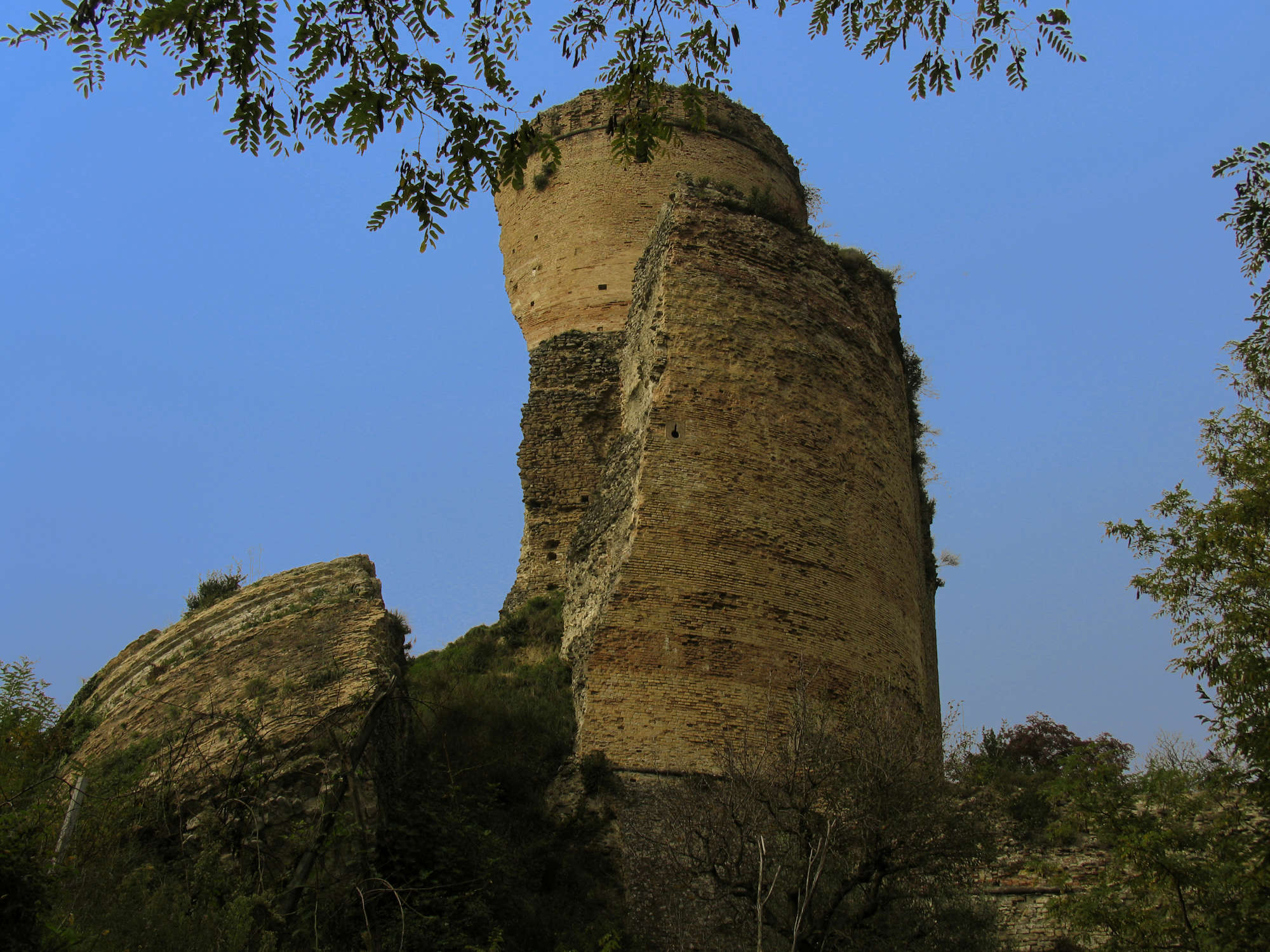
6. Ceparano
Perched on top of a mountain overlooking the Marzeno River valley, the site of Ceparano represents one of the most fascinating historical places in the Romagna Apennines. Here, about 10 kilometers from Faenza, in the direction of Modigliana, stood a medieval fort known as the Tower of Ceparano. Its remains, which still rise majestically among the ruggedness of the landscape, are reminiscent of the layout of the castle of Rontana, another garrison of significant strategic importance for the control of the territory. Ceparano's origins date back to the 10th century, when the site housed a parish church dedicated to Santa Maria in Castro Cepariano, mentioned as early as 970 and surrounded by a small castle. The history of Ceparano is closely linked to the Conti Guidi family, a powerful lineage that dominated the region for four centuries. However, Ceparano's strategic location made it a target of constant contention. The Faentines, supporters of the Guelph faction, demolished the fortress in 1167 and rebuilt the church in a less vulnerable location.
In the 13th century, the Manfredi of Faenza regained control of the fort, which was further destroyed in 1356 by Cardinal Albornoz during his campaign against Ghibelline strongholds. Astorgio I dei Manfredi had it rebuilt in 1378, as evidenced by two stone slabs found near the tower: one of them depicts the Manfredian coat of arms, while the other celebrates the rebuilding with a Latin inscription. Both finds are now housed in the Pinacoteca Comunale di Faenza.
Subsequently, the tower followed the vicissitudes of the domains of Romagna: it passed briefly under Cesare Borgia (the Valentine) in 1500, then to the Venetians in 1503, and finally to the Papal State, which in 1577 decreed that the structure be demolished because of raids by brigands. The original parish church of Santa Maria, now called San Giorgio, was eventually moved to a lower elevation, where it preserves a striking 15th-century baptismal font and works of art of Tuscan origin that testify to centuries of religious history.
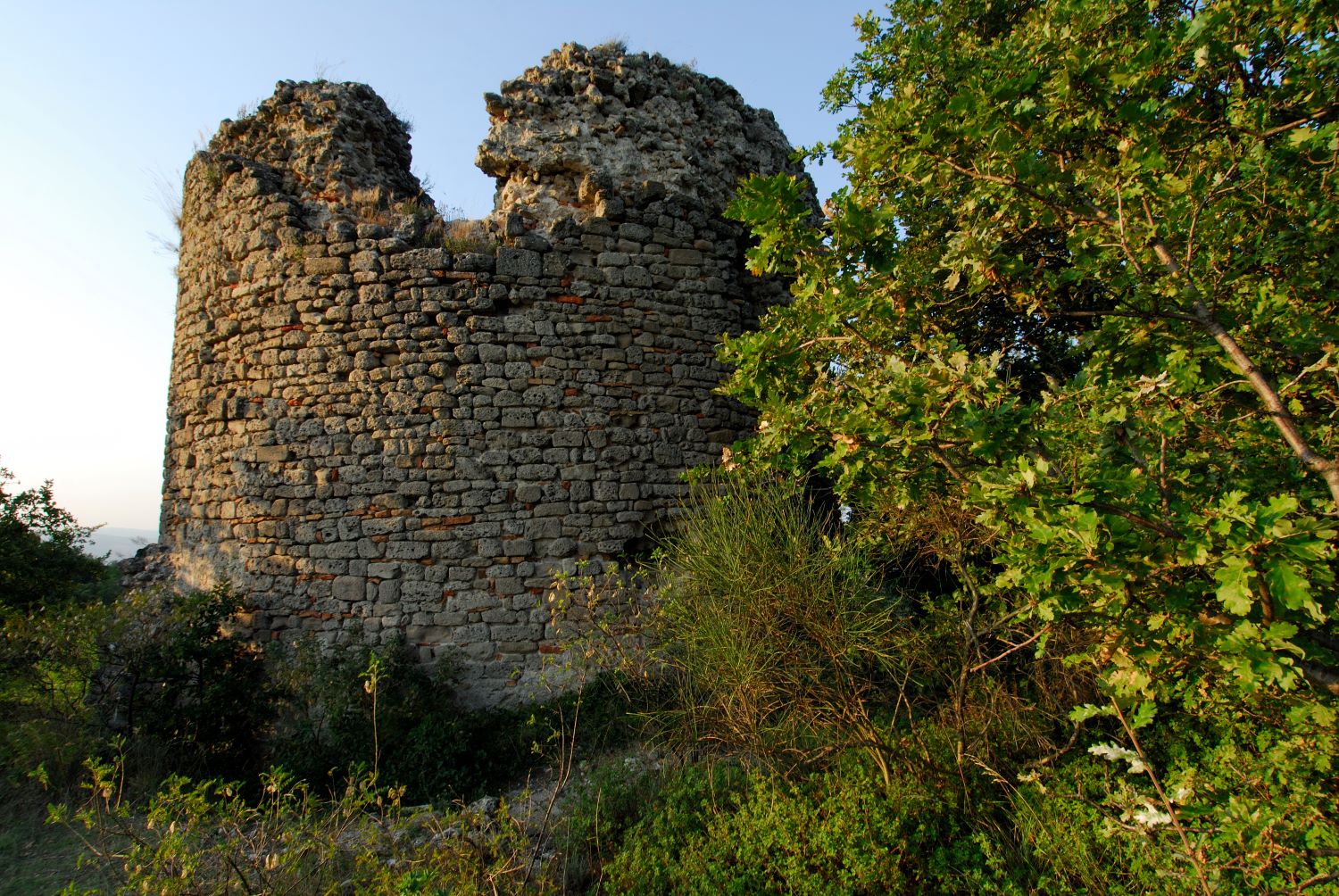
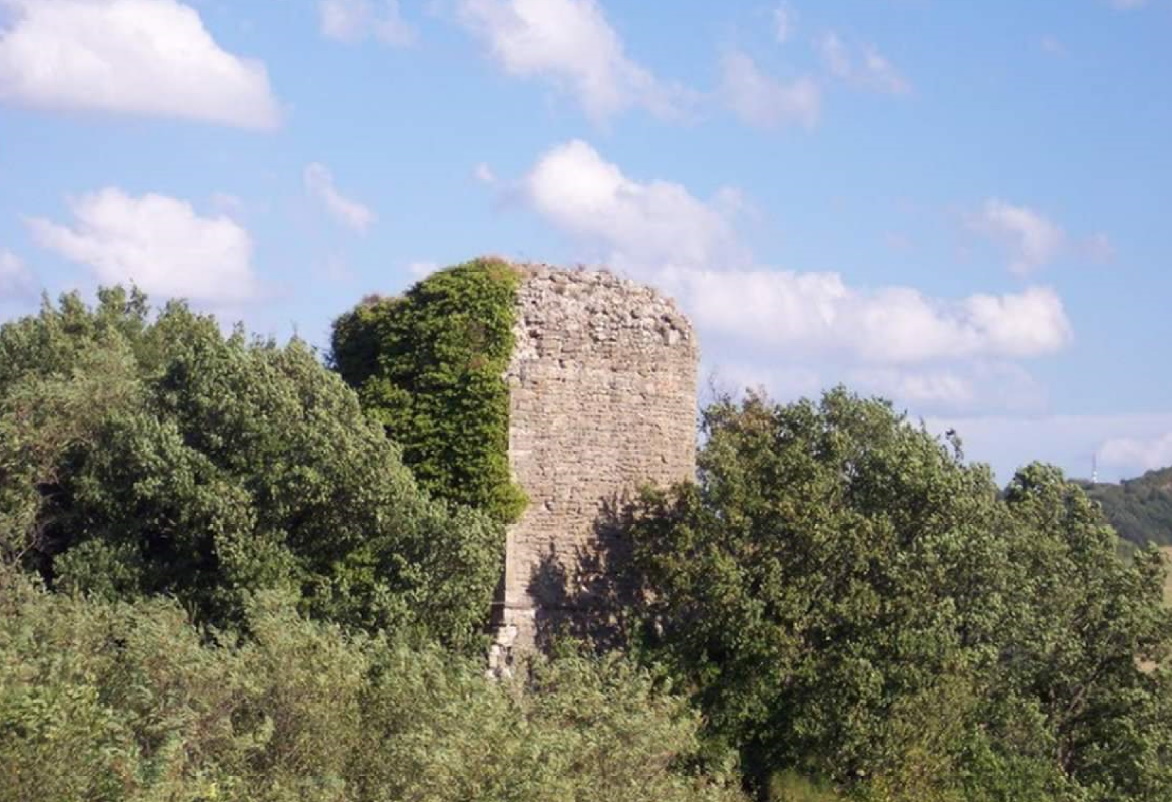
7. Castrocaro Terme.
Castrocaro Terme, one of the most picturesque villages in Romagna, encompasses a thousand-year history that is intertwined with the politics and culture of the region. The first records of "Castrum Carium" date back to 1035, but it is believed that the site was already inhabited in Lombard times under the name of Sussubium. Its strategic location, on the valley of the Montone River, made it a stronghold contested by various powers, from the Church to medieval municipalities and the Republic of Florence.
During the Middle Ages, the castle of Castrocaro developed as one of the most important fortifications in Romagna. In 1371, the papal legate Anglico de Grimoard described it in the famous Descriptio provinciae Romandiolae as a complex structure with imposing walls, towers and fortified gates. The fortress was divided into three main nuclei: the tower of the "Girone," the Rocca and the Medici arsenals. This arrangement, optimized for defense and offense, reflected the advanced architectural techniques of the time. Under Florentine rule, beginning in 1403, Castrocaro was included among the 21 most important castellanies in Tuscany, and the Medici made significant improvements to the structure to adapt it to new war requirements.
Today, the Castrocaro fortress is considered a masterpiece of medieval architecture. The visit begins at the Palazzo del Castellano, which houses a museum (the Historical Museum of the Castle and the City) with collections of weapons, ceramics, and Renaissance artwork. Descending to the Medicean Arsenals, you can admire the "gunneries," unique rooms designed for modern artillery, featuring large vaults and chimneys designed to dissipate smoke. The route culminates in the inner courtyard, where historical reenactments and performances are held.
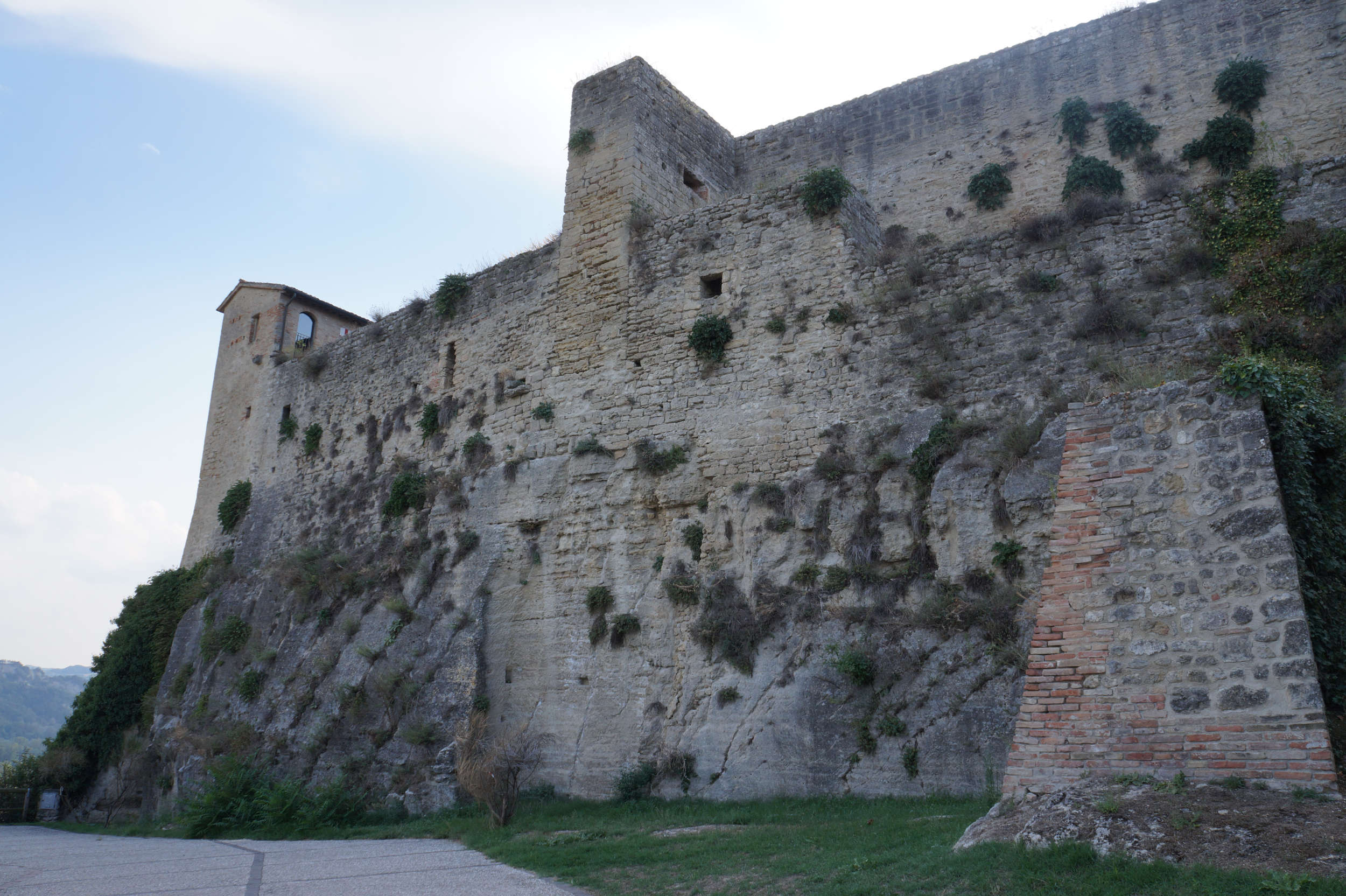
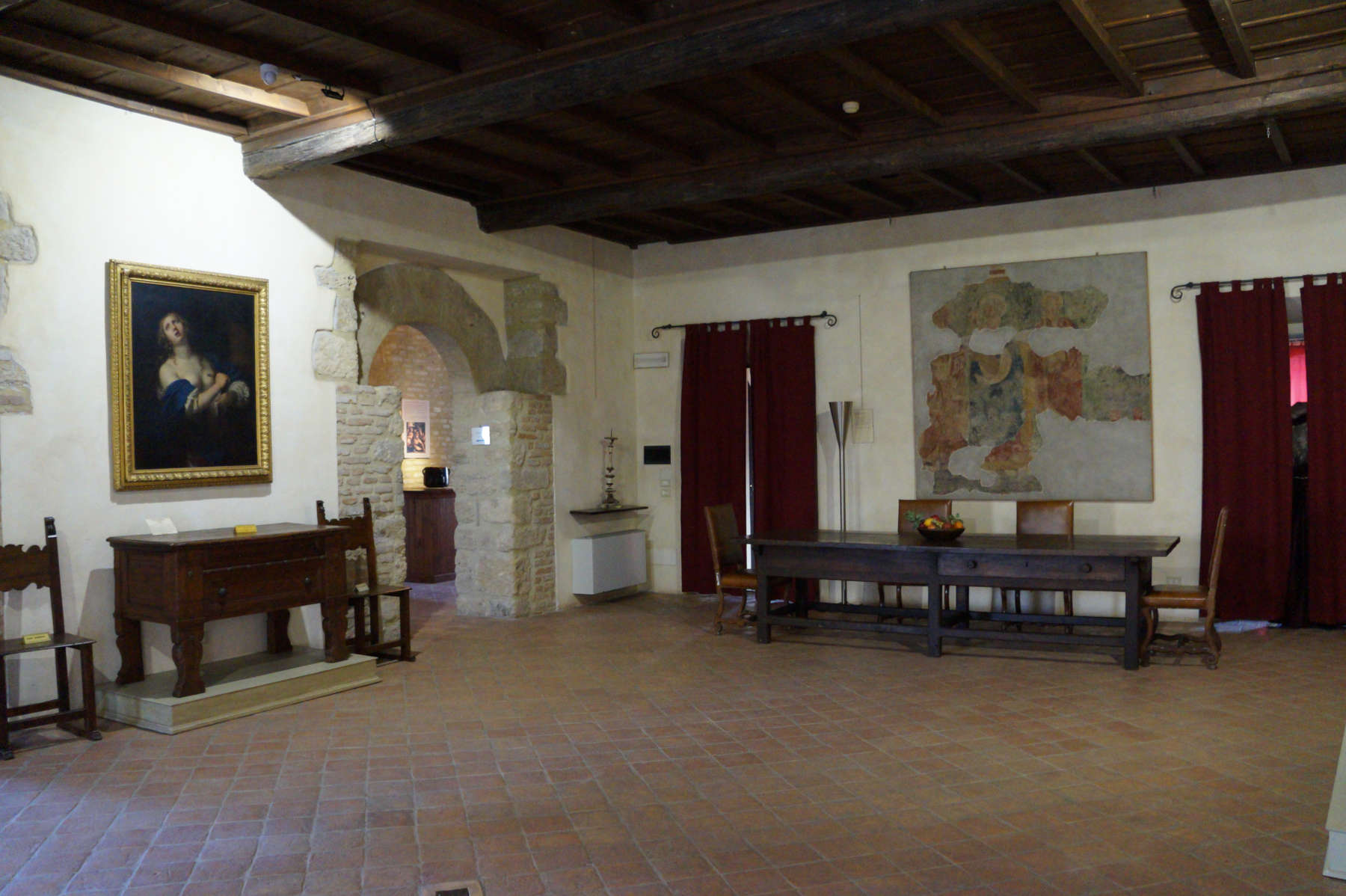
8. Terra del Sole
Established in 1564 at the behest of Cosimo I de' Medici, Terra del Sole represents one of the most extraordinary examples of an ideal Renaissance city, along with cities such as Sabbioneta and Palmanova. Its construction responded to a precise strategy of the Grand Duchy of Tuscany: to fortify the northeastern border and create an administrative center for the management of Tuscan Romagna. The project, entrusted to military engineer Giovanni Camerini and later perfected by Bernardo Buontalenti, integrated state-of-the-art fortifications with a perfectly symmetrical urban plan.
The city developed around a central square, overlooked by the Palazzo del Commissario, seat of the local government, and the church of Santa Reparata, intended for religious services. The walls surrounding Terra del Sole, equipped with angular bastions and fortified gates (Florentine and Roman), are a masterpiece of military architecture: they protected not only the local population, but also the town's commercial and administrative activities, which included a grain and salt market.
Terra del Sole's location on the border with the Church State made it a strategic point for the administration of justice. Until the 18th century, the town was the scene of trials and sentences, becoming a symbol of Medici control over the region. Today, the town retains its original structure intact and offers visitors the opportunity to immerse themselves in an out-of-time atmosphere. The perfectly preserved walls and the view of the surrounding valley make Terra del Sole a must-see destination for lovers of history and Renaissance architecture.
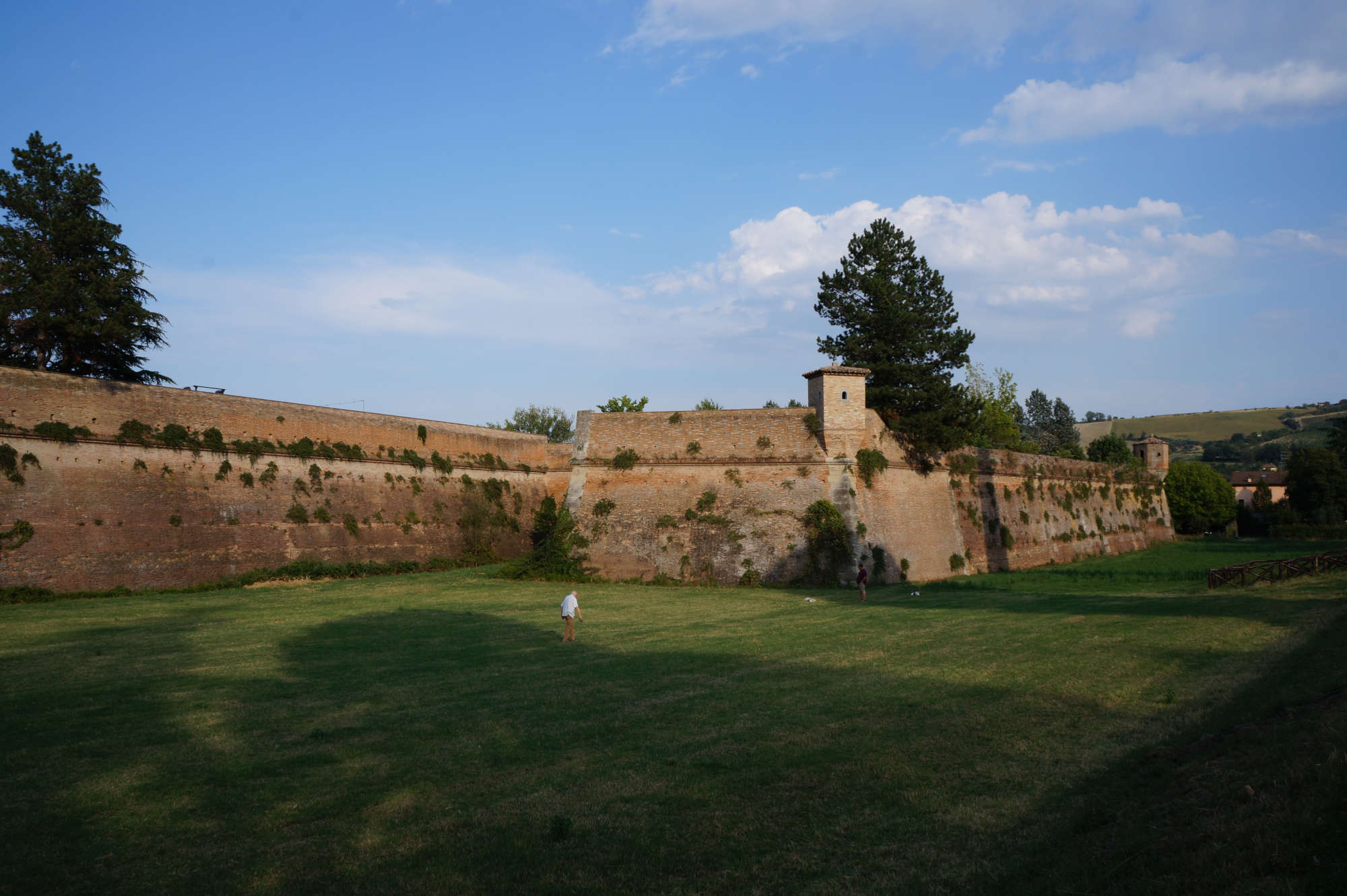
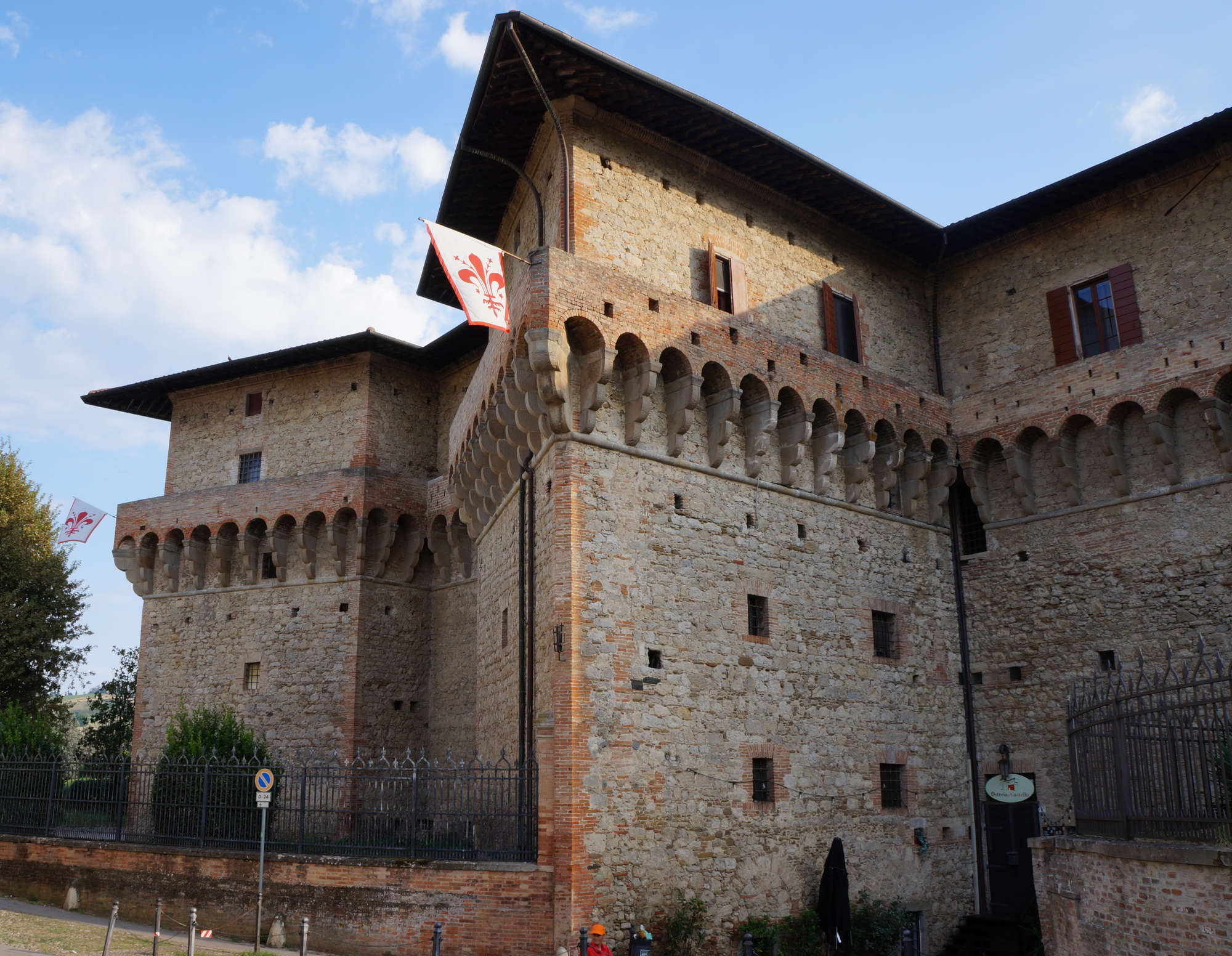
9. Forlì
Forlì, during the Renaissance, became one of the nerve centers of Italian history, thanks to the presence of Caterina Sforza, a figure of great importance. In 1497, Caterina, the widow of Girolamo Riario and niece of Pope Sixtus IV, married Giovanni de' Medici, known as "il Popolano": from the marriage was born Ludovico (later Giovanni) delle Bande Nere, a famous mercenary captain and father of Cosimo I de' Medici, the first Grand Duke of Tuscany. The history of Caterina Sforza is inextricably linked to the city of Forli, which was the scene of one of her most famous battles.
The focal point of Forli's defense was the Rocca di Ravaldino, which was named after Caterina Sforza herself. The Rocca was one of the main medieval fortifications, and in 1471, the architect Giorgio Marchesi Fiorentino expanded its fortifications. In 1481, Girolamo Riario, Caterina's husband, commissioned the construction of the Cittadella, a series of fortifications and ravelins intended to further strengthen the city's defense. The Rocca di Ravaldino was surrounded by moats and drawbridges that made it virtually impregnable. In 1496, Caterina Sforza had an additional ravelin and palace, called Il Paradiso, erected over the ruins of an ancient 14th-century fort. Despite her heroic resistance, Caterina Sforza could not prevent the fall of the fortress in January 1500, when Cesare Borgia, after besieging the city, conquered the castle and took her prisoner to Rome. Caterina's heroic defense marked a crucial moment in the city's history, making it famous throughout Italy.
The Rocca di Ravaldino has undergone several changes over the centuries, especially with the advent of artillery, which reduced its importance as a defensive structure and turned it into a prison. Today, the Rocca has been restored, and some of its most distinctive elements, such as the central keep and its towers, have been restored to their original splendor. The Rocca's keep, in particular, is famous for its stone spiral staircase, which is an outstanding example of medieval military architecture. Despite transformations over time, the Rocca di Ravaldino remains an important symbol of the history of Forli and the Italian Renaissance.
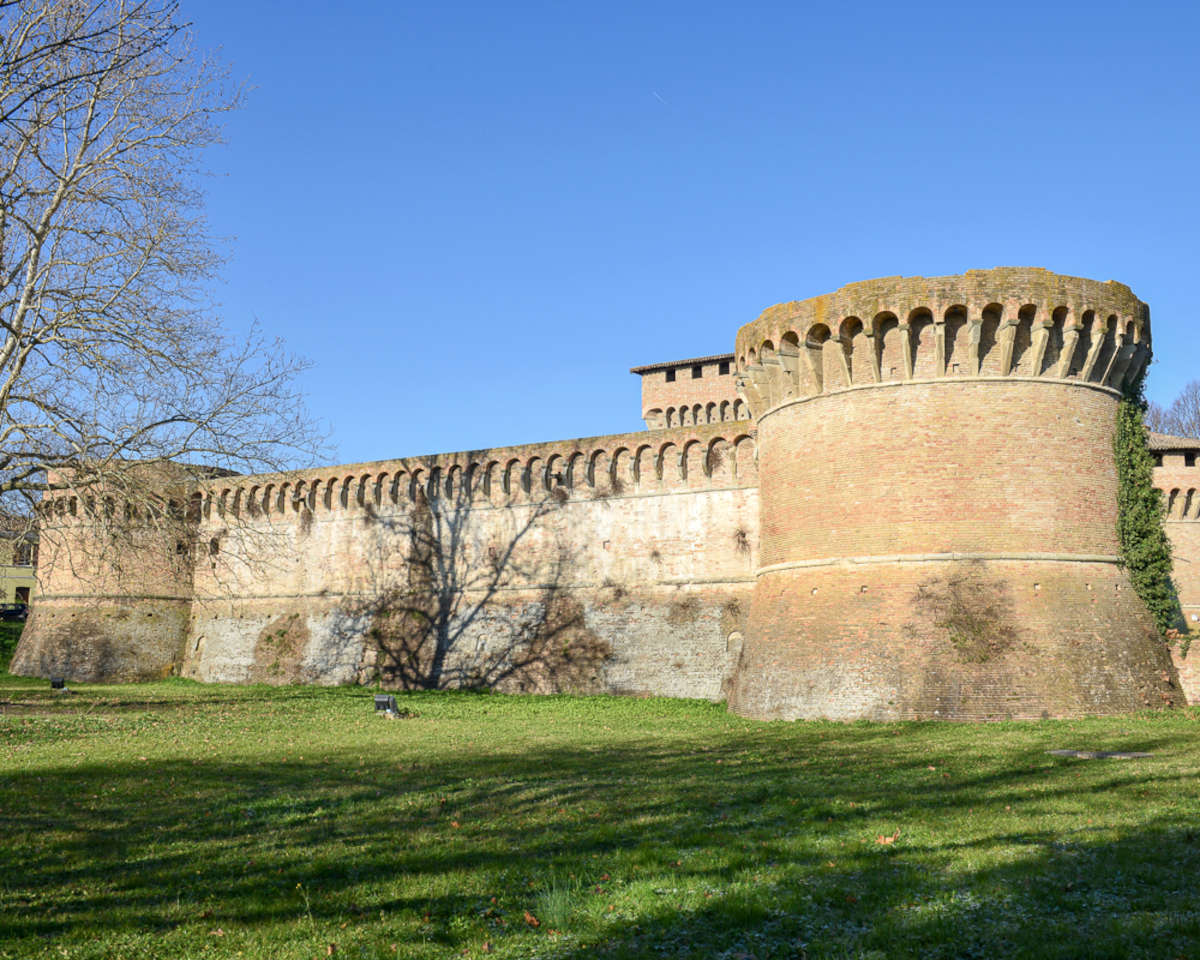
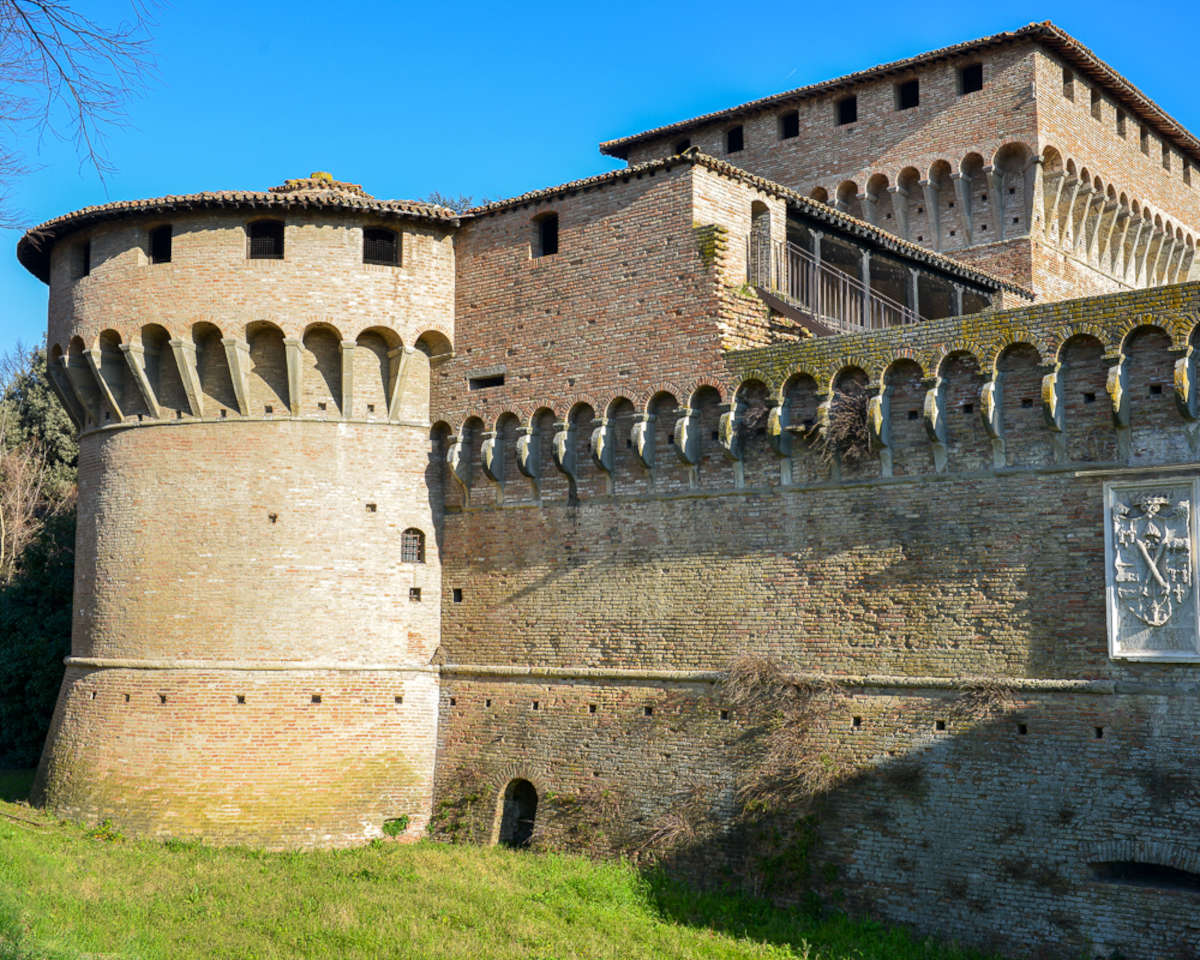
10. Forlimpopoli
Forlimpopoli is a town rich in history and tradition, whose origin dates back to the mid-14th century, when Cardinal Legate Egidio Carrillo de Albornoz decided to erect a fortress on the ruins of the Romanesque cathedral of Santa Maria Popiliense. This fort, built between 1361 and 1363, had a defensive function, mainly to protect the small community that remained after the destruction of the city by papal troops in 1360. At that time, the fortress was known as Salvaterra, a name that recalled its function of garrison and protection. In 1379, Forlimpopoli came under the control of Sinibaldo Ordelaffi, who became lord of the city by concession of Pope Urban VI. It was he who transformed the fortress into a real fortress, beginning the fortification work that would shape the structure. Later, between 1471 and 1480, Pino III Ordelaffi continued the work, giving the fortress the appearance we can admire today. The fortress was strengthened with ramparts reinforced by scarp masonry and with four corner towers of square section, later transformed into circular masonry to adapt to the new techniques of warfare.
The Fortress of Forlimpopoli became an example of Renaissance military architecture, typical of Romagna at the time. With the intervention of Caterina Sforza, the fortress took its final form, similar to that of the contemporary fortresses of Imola, Forlì and Dozza. After Caterina's death, the fortress came under the control of Cesare Borgia and later to that of the Rangoni family. Between 1535 and 1578, rule passed to the Zampeschi, but the structure maintained its defensive function and was a landmark for the city and its community.
Today, the Fortress of Forlimpopoli is a witness to the medieval and Renaissance history of the city. The structure, although remodeled over time, still retains many of its original elements, such as the moats and some sections of the defensive walls. The Rocca represents not only an important testimony to the past, but also a symbol of the continuous transformation of the city, which has been able to maintain its link with history while projecting into the future.
